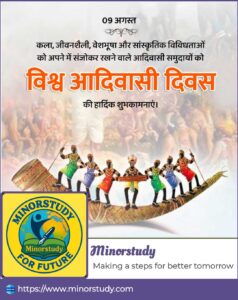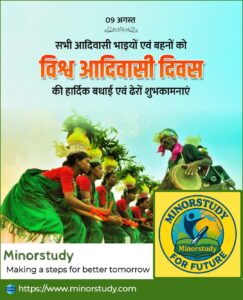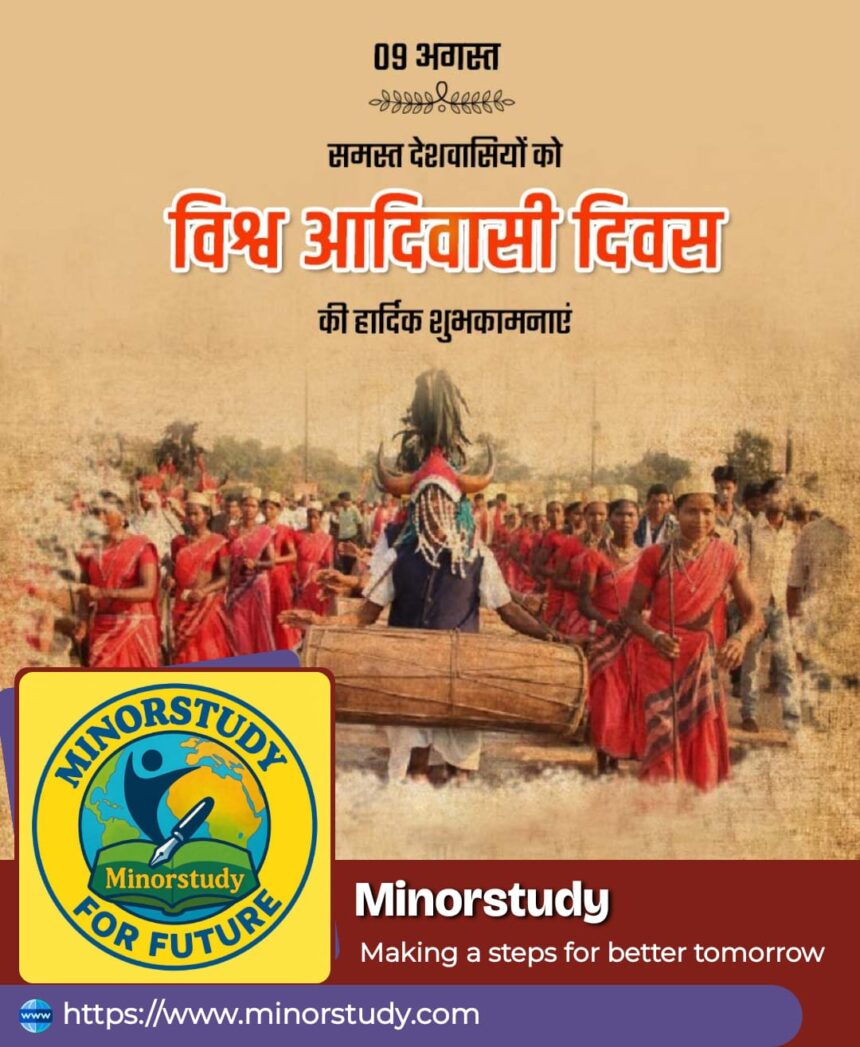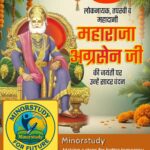World Tribal Day – History, Significance, Inspiring Facts & Lessons for All
World Tribal Day, officially known as the International Day of the World’s Indigenous Peoples, is celebrated every year on 9th August. It’s a day dedicated to honoring the cultures, traditions, and contributions of indigenous communities worldwide, while also highlighting the challenges they face. This day reminds us of the deep wisdom these communities hold — wisdom about living in harmony with nature, preserving traditions, and fostering community values.
- History of World Tribal Day
- 7 Inspiring Facts About World Tribal Day
- Timeline of World Tribal Day
- Significance of World Tribal Day
- How World Tribal Day is Observed
- Wishing Messages for World Tribal Day
- Importance of World Tribal Day in Our Life
- Daily Life Impacts of World Tribal Day
- Frequently Asked Questions (FAQs)
- Important Points to Remember
- Conclusion
In this guide, you’ll discover everything about World Tribal Day — its history, inspiring facts, timeline, significance, observances, importance in life, wishing messages, FAQs, and how it impacts our daily lives.
History of World Tribal Day
The United Nations General Assembly proclaimed 9th August as the International Day of the World’s Indigenous Peoples in 1994. The date marks the first meeting of the UN Working Group on Indigenous Populations in 1982.
The main objectives were:
To recognize indigenous peoples and their unique identities.
To address issues like land rights, education, healthcare, and cultural preservation.
To encourage governments and communities to protect indigenous rights.
Over the years, World Tribal Day has become a global awareness movement, uniting people from all walks of life to protect the heritage and dignity of indigenous cultures.

7 Inspiring Facts About World Tribal Day
Global Celebration: Indigenous peoples live in more than 90 countries, speaking over 7,000 languages.
Population Size: There are about 476 million indigenous people worldwide, making up 6.2% of the global population.
Guardians of Nature: Indigenous communities protect 80% of the world’s remaining biodiversity.
Diverse Traditions: From the Sami people in Europe to the Adivasis in India, tribal cultures vary but share values of harmony, community, and sustainability.
Rich Oral Heritage: Many communities preserve history through songs, dances, and stories rather than written records.
Annual UN Theme: Every year has a unique theme focusing on specific indigenous rights and development issues.
Youth Leadership: Tribal youth are increasingly leading movements for cultural preservation and climate action.
Timeline of World Tribal Day
| Year | Event |
|---|---|
| 1982 | First meeting of the UN Working Group on Indigenous Populations. |
| 1993 | Declared the International Year of the World’s Indigenous Peoples. |
| 1994 | UN officially designates 9th August as World Tribal Day. |
| 2007 | UN adopts the Declaration on the Rights of Indigenous Peoples. |
| 2010s | Increasing focus on climate change and indigenous knowledge. |
| 2020–Present | Highlighting healthcare access and environmental stewardship. |
Significance of World Tribal Day
1. Cultural Preservation
World Tribal Day protects languages, art forms, rituals, and traditions that are at risk of disappearing.
2. Human Rights Awareness
It draws global attention to the challenges indigenous communities face — displacement, lack of healthcare, and discrimination.
3. Environmental Importance
Tribal communities play a critical role in protecting forests, rivers, and wildlife — essential for combating climate change.
4. Social Inclusion
It fosters dialogue between mainstream societies and indigenous peoples, encouraging respect and collaboration.
How World Tribal Day is Observed
Cultural Programs: Showcasing tribal music, dance, crafts, and cuisine.
Awareness Campaigns: Discussions on indigenous rights through seminars, workshops, and social media.
Policy Dialogues: Government and NGOs address tribal welfare schemes.
Youth Participation: Tribal youth share stories and experiences on digital platforms.
Community Gatherings: Elders pass down traditional knowledge to younger generations.
Wishing Messages for World Tribal Day
🌱 “On World Tribal Day, let’s honor the guardians of nature and the keepers of ancient wisdom.”
🌏 “Wishing you a World Tribal Day filled with respect, love, and learning from indigenous cultures.”
🪶 “May we always cherish the roots of humanity that tribal communities represent.”
🤝 “Happy World Tribal Day! Let’s celebrate diversity and protect our shared heritage.”

Importance of World Tribal Day in Our Life
Teaches Sustainability: Tribal lifestyles show us how to live in balance with nature.
Promotes Equality: Reminds us that every culture has value and dignity.
Preserves Heritage: Protects ancient wisdom for future generations.
Encourages Empathy: Helps break stereotypes and fosters mutual respect.
Strengthens Global Unity: Indigenous issues are human issues — we are all connected.
Daily Life Impacts of World Tribal Day
Eco-friendly Living: Inspired by tribal practices, we can adopt sustainable habits.
Cultural Enrichment: Learning tribal music, crafts, and stories adds depth to our lives.
Social Awareness: Encourages us to advocate for marginalized communities.
Mindful Consumption: Understanding how overuse harms ecosystems and people.
Community Spirit: Tribal values remind us of the importance of helping each other.
Frequently Asked Questions (FAQs)
Q1. Why is World Tribal Day important?
It promotes indigenous rights, preserves culture, and fosters environmental protection.
Q2. How many indigenous people are there in the world?
About 476 million, living in over 90 countries.
Q3. What is the date of World Tribal Day?
It is celebrated annually on 9th August.
Q4. Who started World Tribal Day?
The United Nations General Assembly in 1994.
Q5. What role do indigenous peoples play in climate action?
They protect most of the world’s biodiversity and practice sustainable living.
Important Points to Remember
Date: 9th August
Purpose: Honor indigenous peoples and raise awareness about their challenges.
Global Reach: Celebrated worldwide with cultural and educational events.
Environmental Role: Key protectors of biodiversity.
Ongoing Effort: Advocacy for rights and inclusion continues year-round.
Conclusion
World Tribal Day is more than just an annual observance — it’s a reminder of humanity’s roots. Indigenous communities embody the wisdom of living in harmony with the Earth, valuing relationships over possessions, and respecting all forms of life.
In a modern world chasing speed and consumption, tribal values bring us back to balance. By learning from and supporting these communities, we’re not just preserving cultures — we’re safeguarding the planet and our collective future.
Celebrating World Tribal Day means making a promise: to respect diversity, protect the environment, and stand for justice. And that’s a commitment that enriches not only indigenous lives but also our own.









For most recent information you havge to pay a visit internet
and on the web I found this website as a most excellent website
for newest updates.
Hello! Do youu know if they make any plugins to assist with SEO?
I’m trying to get my blog to rank for some targeted keywords but I’m not seeing very good success.
If you know of any pplease share. Thank you!
Howdy! I know this is somewhat off topic but I was wondering which
blog platform are you using for this website? I’m getting
tired of WordPress because I’ve had issues with hackers and I’m looking at options
for another platform. I would be great if you could point me
in the direction of a good platform.
ค่าย PԌ สล็อตแตกยับ!
รวยได้ทุกวัน แค่ปลายนิ้วก็รวยได้!,เบื่อเกมสล็อตยากๆ?
มาเล่น Xen888! สล็อตแตกจริง ทำกำไรเน้นๆ,โอกาสทองมาแล้ว!
ค่าย PG ให้ไม่อั้น ทุกยูส,ทุนน้อยก็รวยได้!
พีจีสล็อต เกมสล็อตยอดนิยม โบนัสเยอะ กำไรงาม,สมัคร Xen888 เลย!
ทำเงินมหาศาล ได้เลย,ที่สุดของความบันเทิงและรางวัลใหญ่ เล่น Xen888 เลย!,
Xen888: คืนยอดเสียสูงสุด!
หมดห่วงเรื่องเสีย ไม่มีอะไรจะคุ้มไปกว่านี้แล้ว,สมัครวันนี้ รับเลย!
Xen888 แจกโบนัสแรกเข้า ไม่ต้องรอ!,พลาดไม่ได้!
พีจีสล็อต โปรโมชั่นโดนใจ แจกโบนัสเพียบ,ฝากน้อยได้เยอะกับ Xen888!
โปรโมชั่นดีๆ ไม่อั้น!,Xen888 แนะนำเพื่อน
ได้เงินง่ายๆ แค่ชวนเพื่อน!,คุ้มยิ่งกว่าคุ้ม!
เล่น Xen888 มีแต่ได้กับได้ โปรโมชั่นเยอะ โบนัสแยะ,
สนุกกับ Xen888 ได้ทุกที่!
รองรับทุกแพลตฟอร์ม รองรับทุกระบบ!,มั่นใจ 100%!
Xen888 เว็บตรง ไม่ผ่านเอเย่นต์ ฝาก-ถอนออโต้ รวดเร็วทันใจ,พร้อมดูแลตลอด 24 ชั่วโมง!
ทีมงานคุณภาพ ใส่ใจทุกปัญหา,พีจีสล็อต เว็บพนันที่ดีที่สุด การันตีความปลอดภัย,เริ่มเล่น Xen888 ได้เลย ไม่ต้องติดตั้งแอพ สะดวกสบายสุดๆ,เล่นเกมไม่มีกระตุก!
พีจีสล็อต การันตีประสบการณ์เล่นสล็อตที่ดีที่สุด,
ยืนยันจากผู้เล่นจริง!
Xen888 แตกจริงทุกเกม แนะนำเลย!,บริการ Xen888 ดีเยี่ยม!
ฝาก-ถอนไวสุดๆ ทันใจทุกครั้ง,เจอแล้วเกมสล็อตที่ใช่!
Xen888 กราฟิกสวย เล่นเพลิน แจ็คพอตแตกกระจาย!,รีวิวจากผู้เล่นจริง!
พีจีสล็อต ไม่ทำให้ผิดหวัง สุดยอดจริงๆ!,ใครยังไม่ลอง Xen888 ถือว่าพลาดมาก!
โอกาสทำเงินดีๆ มาคว้าไปเลย!,เว็บสล็อตที่ดีที่สุดในตอนนี้!
Xen888 เกมสนุกๆ เพลินตลอด!
Ꮇу weƄpagе … เว็บใหญ่
Excellent way of telling, and pleasant post to take data regarding my presentation focus, which i am going to deliver in university.
Great post. I was checking constantly this
blog and I’m impressed! Extremely useful information specifically the last part 🙂 I care for such info a lot.
I was looking for this particular information for a very long time.
Thank you and best of luck.
Do you mind if I quote a few of your articles as long as I provide
credit and sources back to your webpage? My website is in the very same niche as yours and my
users would truly benefit from a lot of the information you provide here.
Please let me know if this okay with you. Many thanks!
My spouse and I stumbled over here from a different page and thought I might as well check things out.
I like what I see so i am just following you.
Look forward to going over your web page again.
เว็บ PG เกมสล็อตแตกง่าย!
ทำกำไรได้จริง แค่ปลายนิ้วก็รวยได้!,เบื่อเกมสล็อตยากๆ?
ลอง PGSLOT สิ! สล็อตแตกจริง
รับทรัพย์เต็มๆ,รีบเลย!
PGSLOT แจกหนัก ทุกยูส,ทุนน้อยก็รวยได้!
พีจีสล็อต เกมสล็อตยอดนิยม แตกหนัก คุ้มค่าสุดๆ,สมัคร PGSLOT
เลย! พิชิตแจ็คพอตหลักล้าน ไม่ต้องรอ,สุดยอดเกมสล็อตและโบนัสจัดเต็ม ต้องที่ PGSLOT เท่านั้น!,
พีจีสล็อต:
คืนยอดเสียสูงสุด!
เล่นเสียก็ยังได้คืน คุ้มค่าเกินคุ้ม,สมัครวันนี้ รับเลย!
PGSLOT รับเครดิตฟรี ไม่ต้องรอ!,พลาดไม่ได้!
พีจีสล็อต โปรโมชั่นสุดปัง คุ้มสุดๆ,ลงทุนน้อยได้มากกับ PGSLOT!
โบนัสสุดคุ้ม รอคุณอยู่เพียบ,PGSLOT ชวนเพื่อนมาเล่น รับโบนัสเพื่อนชวนเพื่อน!,สุดยอดความคุ้มค่า!
เดิมพัน PGSLOT ไม่มีผิดหวัง โปรโมชั่นเยอะ โบนัสแยะ,
เล่น PGSLOT ที่ไหนก็ได้!
รองรับทุกแพลตฟอร์ม ครบครันในหนึ่งเดียว,มั่นใจ
100%! พีจีสล็อต เว็บตรง ไม่ผ่านเอเย่นต์ ฝาก-ถอนออโต้ ใน 30
วินาที,บริการประทับใจ 24 ชม.!
ทีมงาน PGSLOT บริการรวดเร็ว,
พีจีสล็อต เว็บสล็อตอันดับ 1 ที่นักเดิมพันไว้วางใจ ปลอดภัย 100%,เริ่มเล่น PGSLOT ได้เลย เล่นผ่านเว็บบราวเซอร์ ง่ายๆ แค่คลิก!,เล่นเกมไม่มีกระตุก!
PGSLOT เล่นมันส์ไม่มีเบื่อ,
ลองมาแล้ว PGSLOT แตกจริงทุกเกม เล่นแล้วรวย!,ประทับใจบริการ PGSLOT มาก ฝาก-ถอนไวสุดๆ ทันใจทุกครั้ง,
เจอแล้วเกมสล็อตที่ใช่!
พีจีสล็อต ภาพสวย เสียงคมชัด โบนัสแตกบ่อยจริง!,จากใจคนเคยเล่น!
PGSLOT ไม่ทำให้ผิดหวัง ไม่ผิดหวังแน่นอน,ใครยังไม่ลอง
PGSLOT ถือว่าพลาดมาก!
โอกาสทำเงินดีๆ มาคว้าไปเลย!,เว็บสล็อตที่ดีที่สุดในตอนนี้!
พีจีสล็อต เกมสนุกๆ เพลินตลอด!
Ищете работу? Все Вакансии России на одном портале!
Тысячи свежих объявлений от прямых работодателей по всей стране.
Удобный поиск, быстрый отклик и вакансии во всех регионах.
Найдите работу своей мечты уже сегодня!
Heya just wanted to give you a brief heads up and let you know
a few of the images aren’t loading correctly. I’m not sure why
but I think its a linking issue. I’ve tried it in two different browsers and both show the
same results.
Excellent, what a weblog it is! This blog gives valuable data
to us, keep it up.
When someone writes an paragraph he/she retains
the thought of a user in his/her mind that how a user can know it.
Therefore that’s why this paragraph is perfect.
Thanks!
I have been exploring for a little for any high-quality articles or weblog posts on this sort
of house . Exploring in Yahoo I ultimately stumbled upon this website.
Reading this information So i am happy too express that
I have a very just right uncanny feeling I found out exactly what I needed.
I such a lot surely will make certain to don?t disfegard this website
and provides it a glance on a relentless basis.
I enjoy what youu guys are up too. Such clever work and reporting!
Keep up the good works guys I’ve included you guys to my own blogroll.
Great info. Lucky me I ran across your website by chance
(stumbleupon). I have bookmarked it for later!
เว็บ PG สล็อตแตกยับ!
ลุ้นรางวัลใหญ่ทุกชั่วโมง แค่ปลายนิ้วก็รวยได้!,หมดปัญหาเกมสล็อตทำเงินยาก!
มาเล่น PGSLOT! ระบบแตกง่าย รับทรัพย์เต็มๆ,รีบเลย!
พีจีสล็อต แจกหนัก ทุก User,ทุนน้อยก็รวยได้!
PGSLOT เกมสล็อตยอดนิยม กำไรงาม จ่ายเต็ม,เข้าเล่น PGSLOT ตอนนี้!
ทำเงินมหาศาล ได้เลย,ที่สุดของความบันเทิงและรางวัลใหญ่ มีแค่ PGSLOT ที่เดียว!,
พีจีสล็อต: คืนยอดเสียสูงสุด!
หมดห่วงเรื่องเสีย รับเงินคืนไปเลย!,พิเศษสำหรับสมาชิกใหม่!
พีจีสล็อต รับเครดิตฟรี รับเองง่ายๆ,พลาดไม่ได้!
พีจีสล็อต โปรโมชั่นเด็ดประจำสัปดาห์ แจกโบนัสเพียบ,ฝากน้อยได้เยอะกับ PGSLOT!
สิทธิพิเศษมากมาย จัดเต็มให้คุณ,PGSLOT แนะนำเพื่อน ได้เงินง่ายๆ แค่ชวนเพื่อน!,สุดยอดความคุ้มค่า!
เดิมพัน PGSLOT ไม่มีผิดหวัง โปรโมชั่นเยอะ โบนัสแยะ,
เล่น PGSLOT ที่ไหนก็ได้!
ใช้งานง่ายทุกอุปกรณ์
ครบครันในหนึ่งเดียว,มั่นใจ 100%!
พีจีสล็อต เว็บตรง ไม่ผ่านเอเย่นต์ ระบบออโต้ ฉับไว!,บริการประทับใจ 24 ชม.!
แอดมินใจดี พร้อมดูแลและแก้ไขปัญหาให้คุณ,PGSLOT เว็บพนันที่ดีที่สุด ปลอดภัย 100%,เริ่มเล่น
PGSLOT ได้เลย ไม่ต้องติดตั้งแอพ สะดวกสบายสุดๆ,ระบบลื่นไหล ไม่มีสะดุด!
PGSLOT การันตีประสบการณ์เล่นสล็อตที่ดีที่สุด,
ยืนยันจากผู้เล่นจริง!
PGSLOT แตกจริงทุกเกม เล่นแล้วรวย!,ประทับใจบริการ PGSLOT มาก ไม่ต้องรอนานเลย ไม่ต้องรอนานเลย,นี่แหละสล็อตที่ตามหา!
PGSLOT เล่นง่าย ได้เงินจริง โบนัสแตกบ่อยจริง!,
จากใจคนเคยเล่น! PGSLOT ไม่ทำให้ผิดหวัง สุดยอดจริงๆ!,ถ้ายังไม่ลอง PGSLOT คุณพลาดแล้ว!
ช่องทางรวยง่ายๆ อยู่ตรงนี้แล้ว,เว็บสล็อตที่ดีที่สุดในตอนนี้!
PGSLOT เกมแตกง่าย ให้เลือกเยอะมาก
Here is my site … โค้ดเครดิตฟรี 50
Hi Dear, are you actually visiting this site daily, if so afterward you will
without doubt obtain good know-how.
Now I am going to do my breakfast, once having my
breakfast coming again to read other news.
https://datasydney.icu/
Xen888 เกมสล็อตแตกง่าย! ทำกำไรได้จริง แค่ปลายนิ้วก็รวยได้!,เบื่อเกมสล็อตยากๆ?
ลอง Xen888 สิ! สล็อตแตกจริง รับทรัพย์เต็มๆ,รีบเลย!
ค่าย PG จัดเต็ม ทุก User,ทุนน้อยก็รวยได้!
Xen888 เกมสล็อตยอดนิยม แตกหนัก จ่ายเต็ม,สมัคร Ҳen888 เลย!
พิชิตแจ็คพอตหลักล้าน ทันที!,
สุดยอดเกมสล็อตและโบนัสจัดเต็ม มีแค่ Xen888 ที่เดียว!,
Xen888: คืนยอดเสียสูงสุด!
เล่นเสียก็ยังได้คืน ไม่มีอะไรจะคุ้มไปกว่านี้แล้ว,สมัครวันนี้ รับเลย!
พีจีสล็อต แจกโบนัสแรกเข้า ไม่ต้องรอ!,ห้ามพลาดเด็ดขาด!
Хen888 โปรโมชั่นโดนใจ แจกโบนัสเพียบ,ฝากน้อยได้เยอะกับ Xen888!
โปรโมชั่นดีๆ รอคุณอยู่เพียบ,พีจีสล็อต
ชวนเพื่อนมาเล่น รับโบนัสเพื่อนชวนเพื่อน!,สุดยอดความคุ้มค่า!
เดิมพัน Xen888 ไม่มีผิดหวัง โบนัสเพียบ โปรแน่น,
สนุกกับ Xen888 ได้ทุกที่!
ใช้งานง่ายทุกอุปกรณ์ มือถือ
คอมพิวเตอร์ ครบจบในที่เดียว,ปลอดภัยหายห่วง!
พีจีสล็อต ไม่ผ่านตัวกลาง ทำรายการอัตโนมัติ ฉับไว!,บริการประทับใจ 24 ชม.!
ทีมงาน Xen888 บริการรวดเร็ว,Xen888 เว็บสล็อตยอดนิยม การันตีความปลอดภัย,เข้าเล่น Xen888 ได้ทันที ไม่ต้องโหลดแอพให้ยุ่งยาก ง่ายๆ แค่คลิก!,เล่นเกมไม่มีกระตุก!
Xen888 เล่นมันส์ไม่มีเบื่อ,
ยืนยันจากผู้เล่นจริง!
พีจีสล็อต จ่ายจริงทุกยอด!
เล่นแล้วรวย!,บริการ Xen888 ดีเยี่ยม!
ไม่ต้องรอนานเลย ไม่ต้องรอนานเลย,นี่แหละสล็อตที่ตามหา!
พีจีสล็อต เล่นง่าย ได้เงินจริง โบนัสแตกบ่อยจริง!,จากใจคนเคยเล่น!
Xen888 ตรงใจทุกความต้องการ คุ้มค่าทุกการลงทุน,ถ้ายังไม่ลอง Xen888 คุณพลาดแล้ว!
โอกาสสร้างรายได้ อยู่ตรงนี้แล้ว,สุดยอดเว็บสล็อตแห่งปี!
พีจีสล็อต เกมสนุกๆ เล่นได้ไม่เบื่อ
my site … เครดิตฟรี 50
ถ้ารวมเรื่อง…ไว้ในบทความนี้จะสมบูรณ์มากขึ้น.
Feel free to surf to my web blog … โค้ดเครดิตฟรี
I believe this is among the so much vital info for me. And i am glad studying your article.
However wanna remark on some basic things, The website taste is wonderful, the articles is in point of fact great :
D. Excellent task, cheers
I’m no longer positive where you’re getting your information,
but great topic. I needs to spend some time finding out more or
understanding more. Thanks for excellent information I
was on the lookout for this info for my mission. http://dungdong.com/home.php?mod=space&uid=3194685&do=profile
What’s up mates, how is all, and what you wish for
to say concerning this post, in my view its really awesome in favor of me.
I don’t even know how I ended up here, but I thought this post was good.
I don’t know who you are but certainly you’re going to a famous blogger if you aren’t already 😉 Cheers!